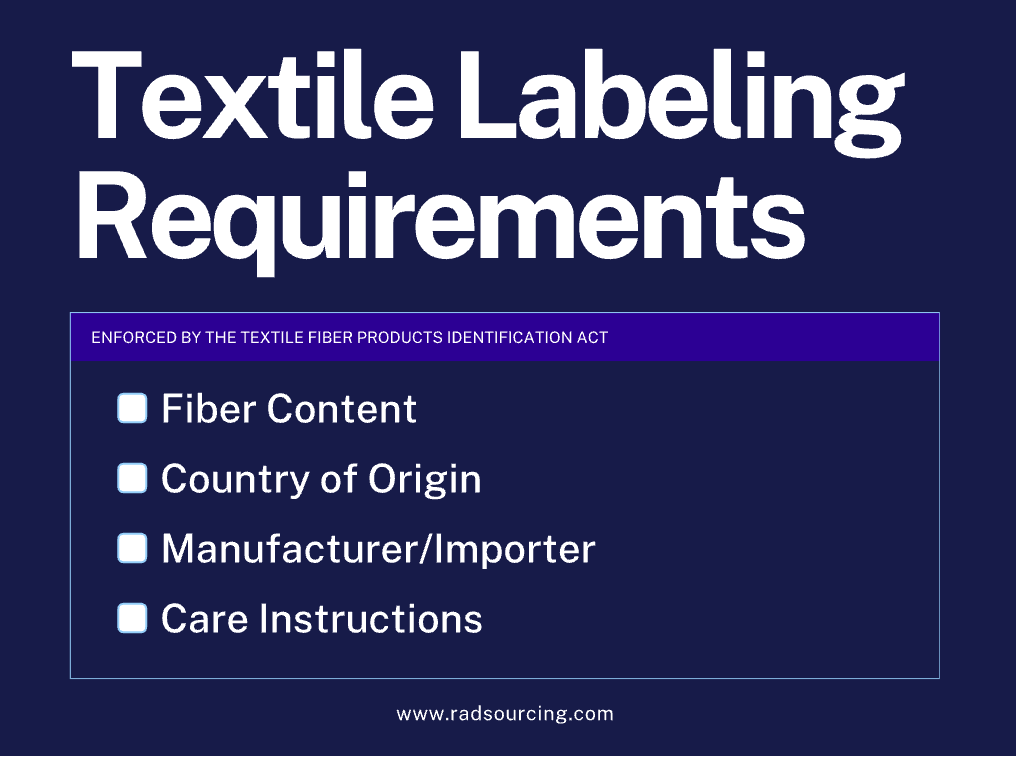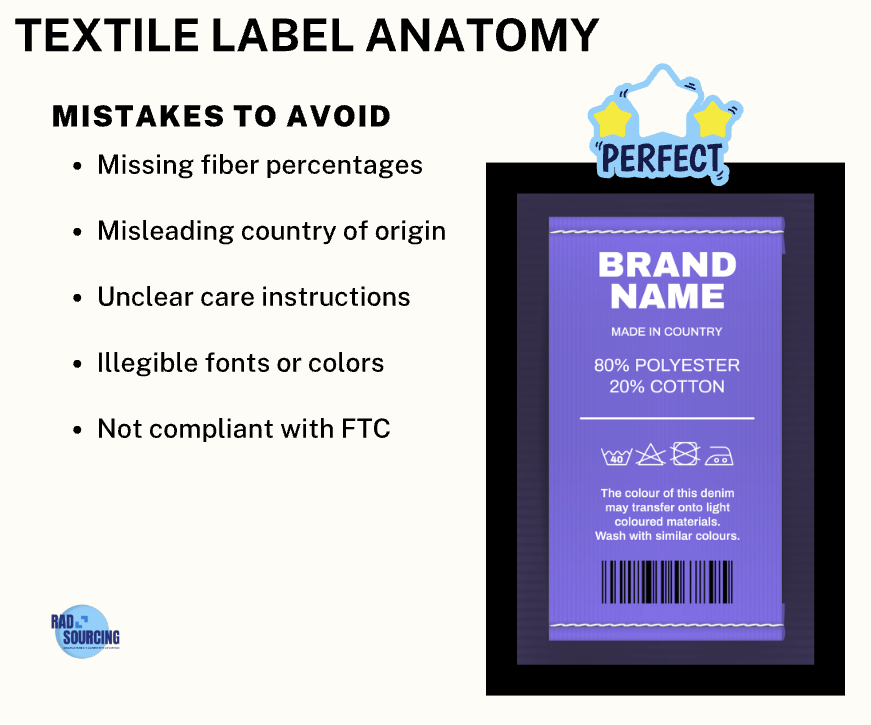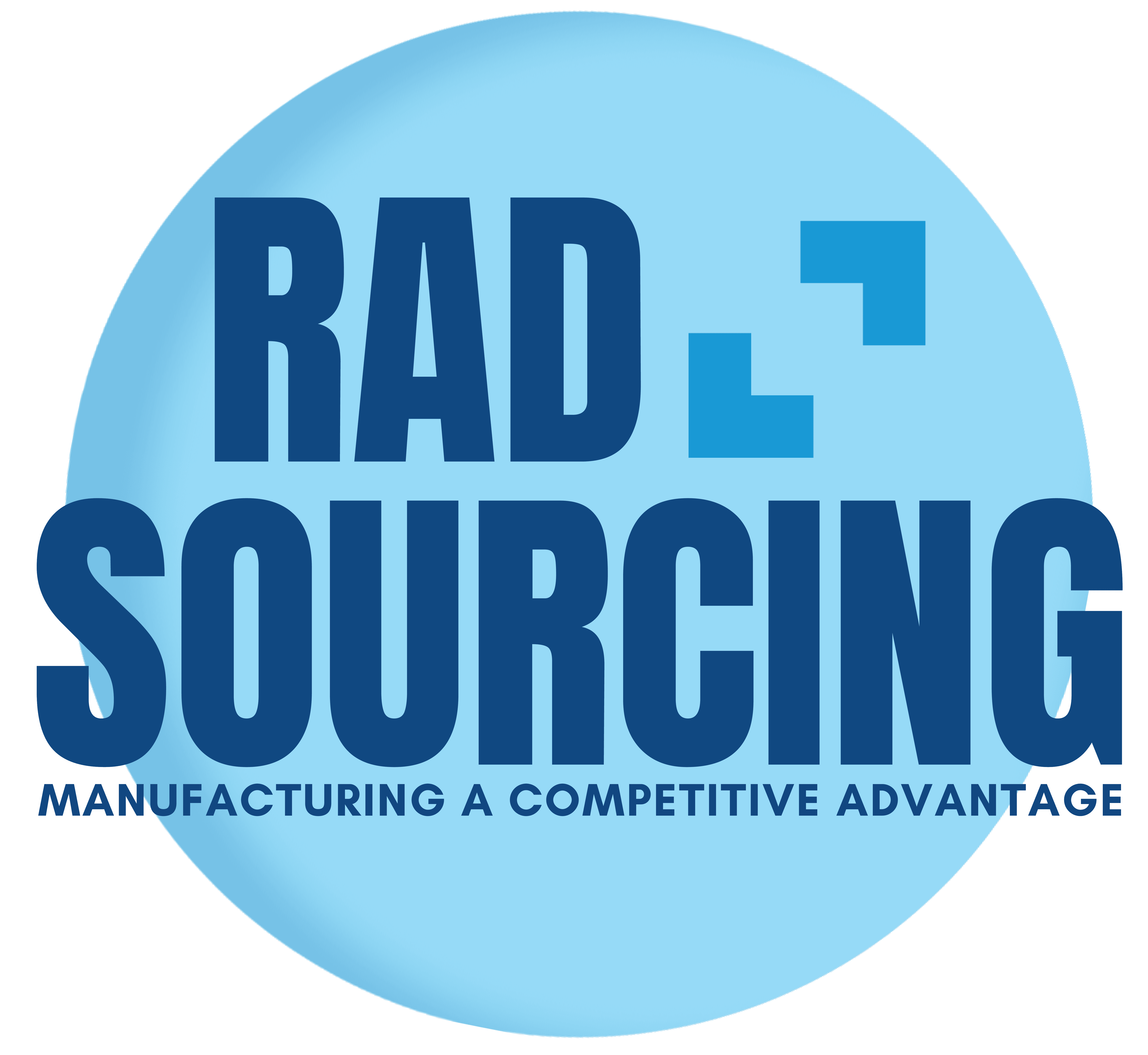For brands in the clothing and textile industry, understanding U.S. textile labeling requirements is essential for compliance and consumer trust. The Federal Trade Commission (FTC) enforces these regulations under the Textile Fiber Products Identification Act, ensuring that consumers receive accurate and transparent product information. At Rad Sourcing, we guide brands through these regulations to ensure compliance and avoid costly penalties. Here’s everything you need to know about U.S. textile labeling laws and best practices.
1. Required Information on Textile Labels
To legally sell textile products in the U.S., labels must include the following:

A. Fiber Content
- Fibers must be listed in descending order by percentage (e.g., “80% Cotton, 20% Polyester”).
- Any fiber making up less than 5% can be labeled as “Other Fibers,” unless it serves a specific functional purpose (e.g., spandex for stretch).
- Wool must be labeled separately under the Wool Products Labeling Act.
B. Country of Origin
- Imported products must clearly state where they were manufactured (e.g., “Made in China”).
- Domestic products must indicate if they were “Made in the USA”, with additional disclosures if foreign materials were used.
- This requirement is especially important for brands sourcing overseas but assembling domestically.
C. Manufacturer or Importer Information
- Labels must include the name of the manufacturer, importer, or a Registered Identification Number (RN).
- Brands can apply for an RN through the FTC’s website to use instead of a company name.
D. Care Instructions
- Labels must comply with the Care Labeling Rule, providing clear instructions on washing, drying, ironing, and bleaching.
- Care instructions can be provided via ISO or ASTM standard symbols or written directions.
One of Rad Sourcing’s clients faced shipment delays because their imported textile goods lacked proper country-of-origin labels. By proactively updating their labels with compliant disclosures, we helped them avoid penalties and ensured a smooth customs process.

2. Products That Require Textile Labeling
FTC regulations apply to a wide range of textile-based products, including:
- Clothing (shirts, pants, dresses, jackets, etc.)
- Home textiles (bedding, towels, curtains, rugs)
- Accessories containing textiles (scarves, gloves, handbags)
Exemptions:
- Shoes, hats, and belts are not required to have fiber content labeling.
- Some second-hand or customized products may be exempt from labeling requirements.
Tip from Rad Sourcing: Brands expanding into new product categories should double-check labeling requirements before production to avoid compliance issues.
3. FTC Compliance & Penalties
Non-compliance with FTC textile labeling laws can result in:
- Fines and penalties for each violation.
- Product recalls or import bans for incorrect labeling.
- Legal action due to deceptive or misleading labeling claims.
Case Study: A brand we worked with mistakenly labeled polyester-blend garments as “100% Cotton.” The oversight led to consumer complaints and a compliance warning. By revising their fiber content labeling, we helped them regain trust and prevent legal repercussions.
4. Best Practices for U.S. Textile Labeling
- Use durable, legible labels that last the product’s lifetime.
- Ensure fiber content accuracy to avoid misleading claims.
- Stay updated on FTC guidelines and changes in textile labeling laws.
- Work with compliance experts to verify labels before mass production.
At Rad Sourcing, we assist brands with textile labeling compliance, from designing custom labels to ensuring adherence to FTC regulations. Whether you need regulatory guidance or full-scale production solutions, we’ve got you covered.
Need help with textile labeling? Contact us at www.radsourcing.com to ensure your products meet U.S. regulations!
